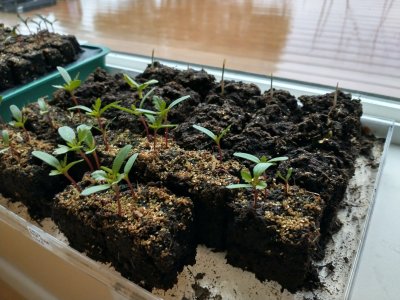digitS'
Garden Master
Fresh ears of corn and green beans, I have to think, were not the important interest of First Nation people. Their 3 Sisters plantings works for dry seed harvesting.
The vining squash reinforces this notion if you find yourself trying to move around to harvest. It does a fairly good job in suppressing weeds.
The sorghum plants were in single rows in my garden. The broomcorn (also a sorghum) was bunched together at the end of a bed. It would probably not be a very good idea to plant them densely with beans in the midst.
It looked to me that they developed seed easily. So, pollination is probably not as difficult as with corn in small plantings.
Steve
The vining squash reinforces this notion if you find yourself trying to move around to harvest. It does a fairly good job in suppressing weeds.
The sorghum plants were in single rows in my garden. The broomcorn (also a sorghum) was bunched together at the end of a bed. It would probably not be a very good idea to plant them densely with beans in the midst.
It looked to me that they developed seed easily. So, pollination is probably not as difficult as with corn in small plantings.
Steve

